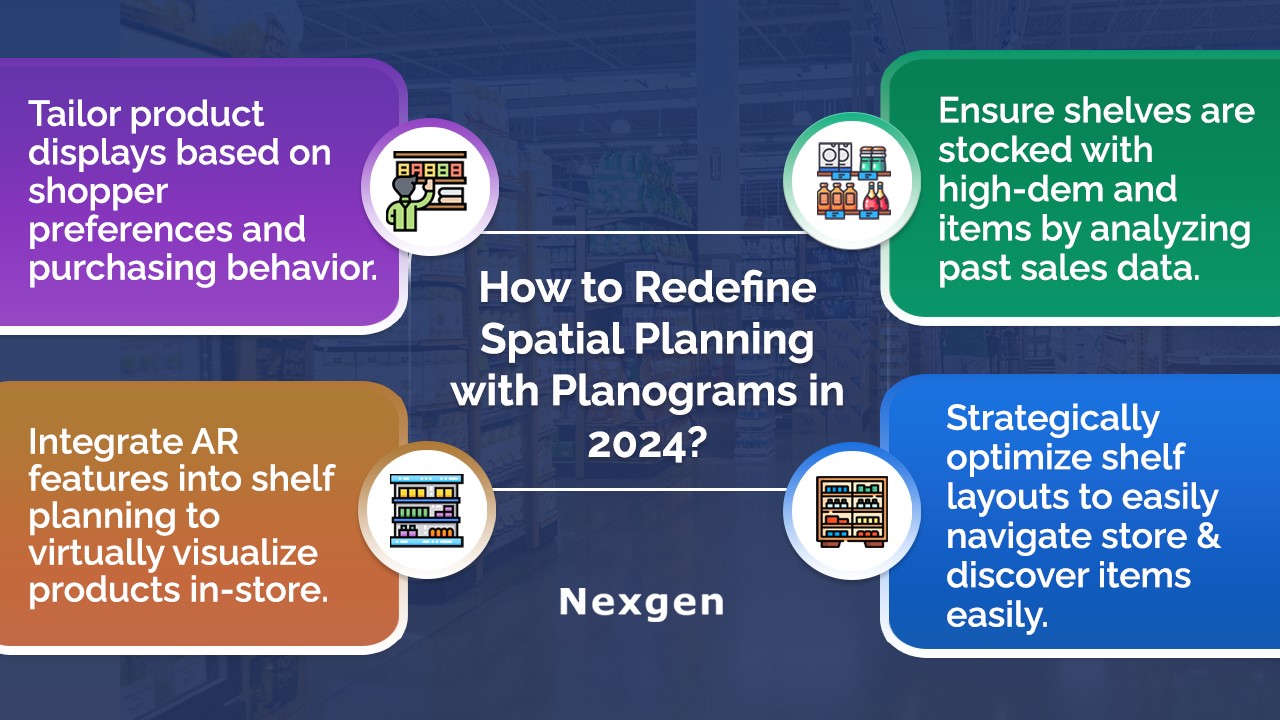In retail, the art and science of visual merchandising have long been key drivers of customer engagement and sales. How products are displayed and organized within a store can influence consumer behavior and perceptions. As we step into 2024, the retail landscape is witnessing a transformative shift in visual merchandising, driven by planogram innovations that extend beyond traditional aisles and shelves.
The Evolution of Visual Merchandising Planograms
Visual merchandising planogram has evolved significantly over the years, transitioning from static displays to dynamic, data-driven strategies aimed at enhancing the shopping experience and driving revenue. In the past, visual merchandising primarily relied on manual processes and subjective decision-making, often resulting in suboptimal outcomes.
2024's Visual Merchandising Planogram Innovations
In 2024, retailers are embracing a new era of visual merchandising planogram innovations that leverage advanced technologies to reimagine spatial planning:

- Data-driven insights: Visual merchandising planogram innovations are underpinned by data-driven insights and analytics. Retailers are leveraging sophisticated algorithms and machine learning techniques to analyze vast amounts of data, including customer demographics, purchasing patterns, and market trends. By gaining deeper insights into consumer behavior and preferences, retailers can develop highly targeted visual merchandising strategies that resonate with their target audience. For example, most stores analyze customer demographics to understand the preferences and shopping habits of their target audience. This helps examine purchasing patterns, key demographic segments, and market trends to identify emerging styles, colors, and silhouettes. By analyzing planogram sales data, retailers can stay ahead of the trend and boost sales.
- Dynamic planogram optimization: Unlike traditional static shelf planning software, nowadays, visual merchandising planograms prioritize dynamic optimization. Retailers are implementing real-time planogram adjustments based on factors such as foot traffic, time of day, and inventory levels. Through the integration of smart sensors and Internet of Things (IoT) technology, stores can automatically adapt their visual displays to optimize customer engagement and drive sales.
- Augmented reality (AR) experiences: AR technology is revolutionizing the way consumers interact with visual merchandising displays. In 2024, retailers will integrate AR features into their store environments, allowing customers to virtually visualize products in their own space before making a purchase. By enabling immersive and interactive experiences, AR enhances customer engagement and empowers shoppers to make more informed buying decisions.
- Personalization at scale: Visual merchandising planogram innovations in 2024 prioritize personalization at scale. Retailers are leveraging customer data and predictive analytics to tailor visual displays and product placements to individual preferences and purchasing histories. By delivering personalized experiences, retailers can foster stronger connections with customers and drive loyalty and repeat business. For example, implementing planograms can extend beyond product placements to create immersive and interactive experiences for customers. Digital screens strategically placed throughout the store can showcase dynamic content, such as fashion shows, style tips, and behind-the-scenes footage. By creating engaging experiences that reflect customers' interests, most stores can foster stronger connections and encourage longer dwell times in-store.
Overview of Nexgen POG
Nexgen POG is a robust and user-friendly cloud-based visual merchandising tool. It is designed for quick and efficient planogramming with minimal effort. Planogram in retail can be designed by easily dragging and dropping the products. The multi-device compatibility feature of POG allows you to obtain, share and edit planogram on any device, including your phone. It helps in designing store-specific planograms for increased product visibility and sales.
Get Your Free Trial Now!